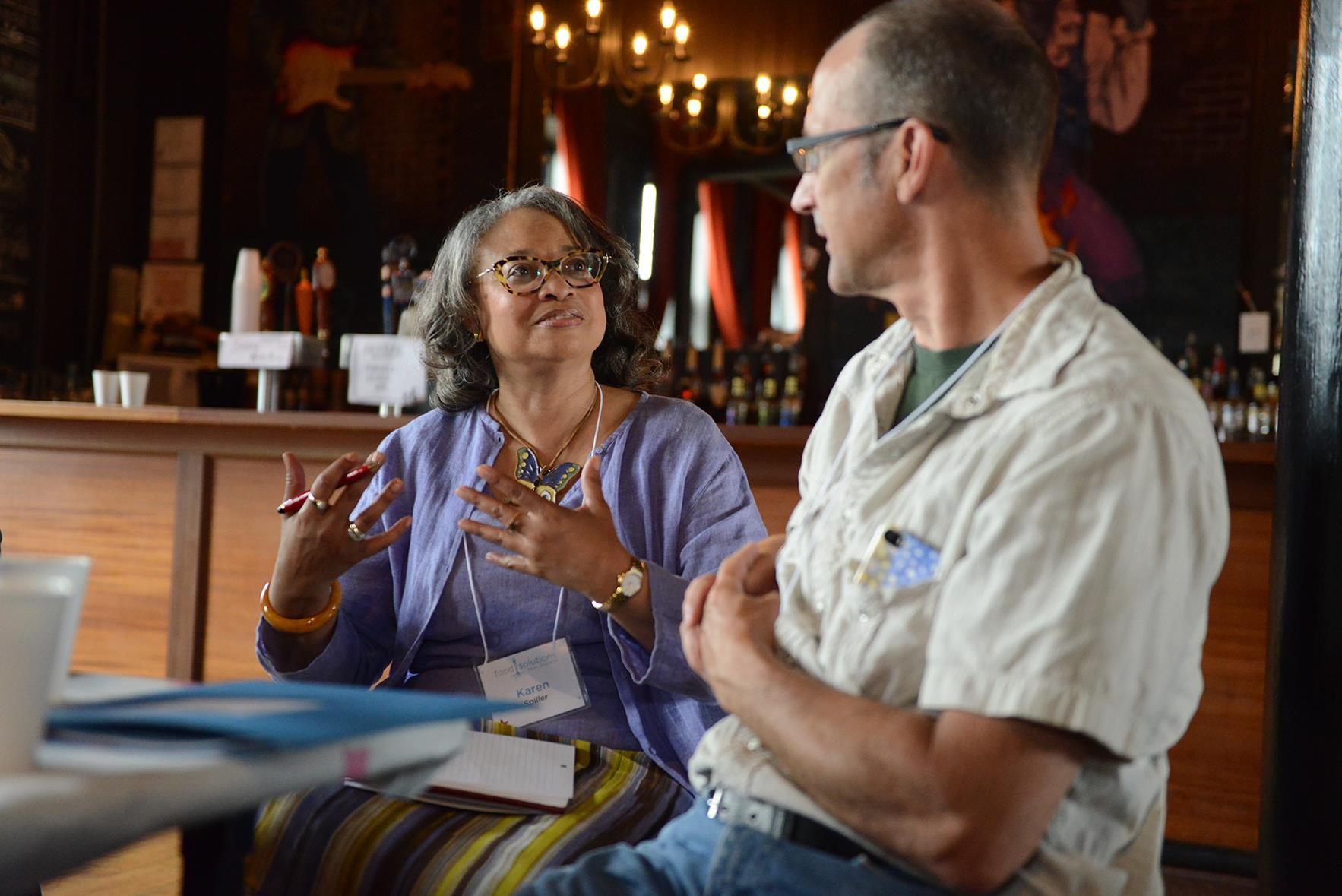Earlier this month, Jim Canales, president of the Barr Foundation and Kate Wolford, president of The McKnight Foundation in Minneapolis, co-authored an op-ed for The Chronicle of Philanthropy. Barr and McKnight are two of the nation’s largest funders of local and regional climate efforts, and Jim’s and Kate’s piece, “Fighting Global Climate Change Requires Foundations to Give Local,” builds a case for how, even though climate is a global challenge, local and regional action is vital—and how foundations of any size can contribute in important ways.
They discuss three tools available to any funder that wants to make a difference advancing local solutions that can have broader impact: convening partners, communications and framing, and making solutions tangible. And they point to examples from their own and others’ experiences. To find out more about these tools and the examples from around the country, I encourage you to read the article and share it with your networks.
What Jim and Kate describe is already happening in many places across our region, with potential for even greater progress and impact if more funders engage. Let me point to just a few examples.
In 2013, at a time when concerns over the region’s deteriorating public transit, roads, and bridges were coming to a head, The Boston Foundation commissioned a study called The Cost of Doing Nothing. The study, done in collaboration with A Better City and the Massachusetts Competitive Partnership, revealed the economic impacts if the state failed to invest in the transportation infrastructure. A follow-up to the report on the benefits of smart, strategic, long-term investment will be completed in late 2016. Investing in public transportation is a critical lever to reduce carbon emissions and these studies play a vital role in framing and communicating about the key challenges and opportunities in ways that resonate with a range of audiences.
To make clean energy solutions tangible, the High Meadows Fund has been working on the creation of highly energy-efficient homes to be located in Vermont mobile home parks. This effort was a response to the large number of mobile homes damaged during Tropical Storm Irene. In collaboration with Efficiency Vermont and the Vermont Housing and Conservation Board, the High Meadows Fund launched a mobile home replacement program that developed and tested highly efficient modular homes. The pilot was successful and these High Performance Modular Homes, such as those manufactured by VerMod, are in production and support several inter-related goals: reducing the energy use (and costs) for low-income homeowners, while also extending the benefits of energy efficiency and renewable energy to a segment of the population often underserved by clean energy innovation. These local solutions are also having broader impact. Based on the success of this effort to date, other states like Alaska, Delaware, New Hampshire, and Oregon are launching similar modular home market transformation initiatives.
An example of effective convening comes from the Henry P. Kendall Foundation, which aims to build support for a bold vision for a resilient, healthy, sustainably produced food system in New England. Starting in 2012, Kendall helped to launch the Food Solutions New England (FSNE) network, which has convened hundreds of people—academics, small and large business owners, elected leaders, residents, and many others—who care about New England and its sustainable agriculture and local food systems. Over the last three years, a cadre of leaders emerged to give shape to a bold, shared vision for how New England can be substantially food-self-reliant, producing as much as 50% of the food we eat by 2060. Not only is the vision becoming widely shared, but the convening done by FSNE has built a growing network of food systems leaders from across the region who are collaborating to bring the vision to life.
There are also even more tools than just the three Canales and Wolford focused on in their piece, such as mobilizing and advocacy. The John Merck Fund has invested in making New England the first coal-free region in the country by supporting coalitions that include the active involvement of local residents and the environmental justice community working in coordination with local and regional environmental organizations. Their strategy has been very successful: four of the region’s seven coal plants have been shut down and three more are set to retire.But the campaigns don’t stop there. As coal plants are decommissioned, the Fund’s grantees remain engaged, advocating for smart redevelopment, including clean energy.
These are just a few of the examples of terrific work being done in New England to address climate change. It is by no means a complete list and I invite readers to suggest others in the comments section below.
COP 21 in Paris set the stage for nations around the globe to take aggressive actions that could begin to avert the most devastating effects of climate change. For those ambitious goals to take root, cities, states, and regions must continue to lead—and there are numerous constructive roles philanthropy can play.




